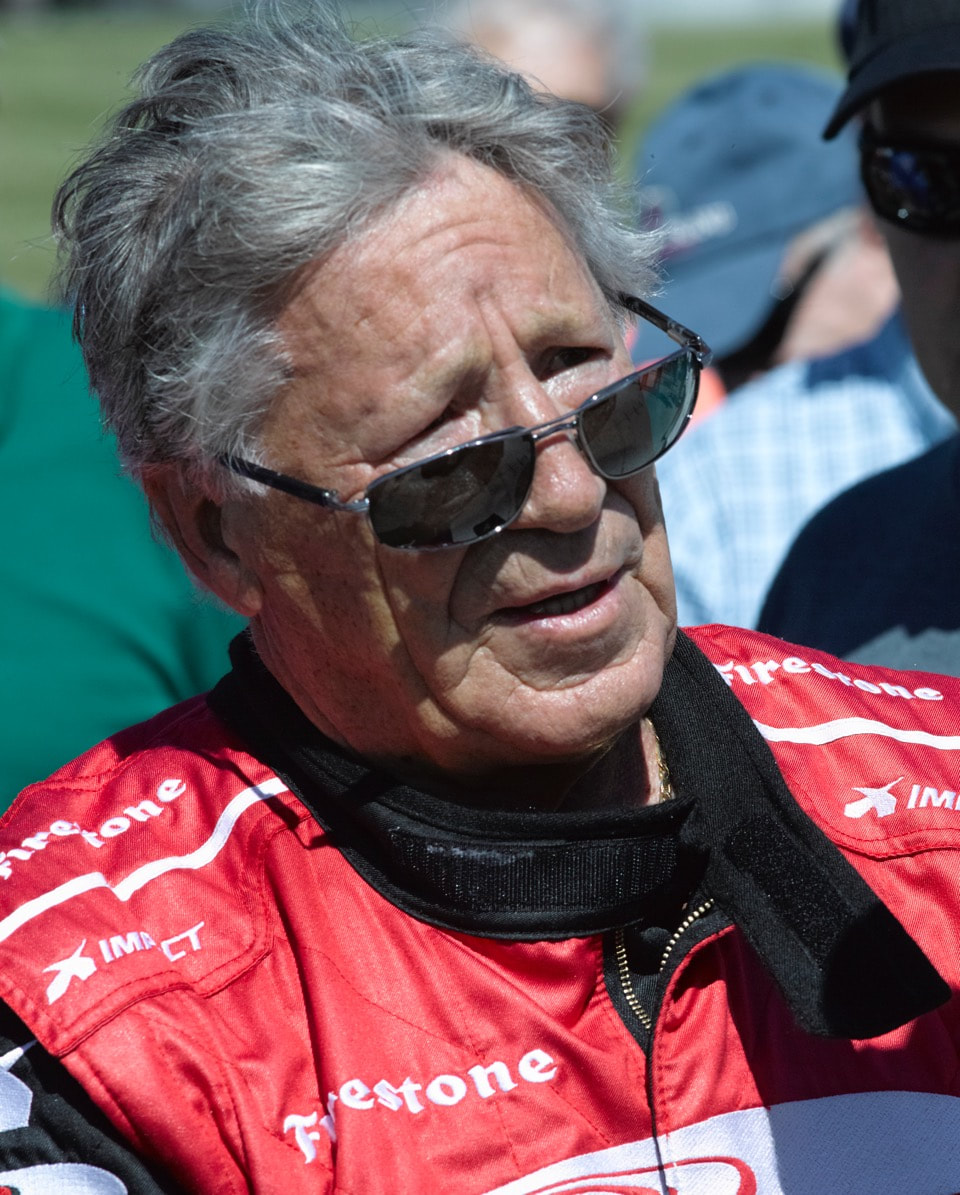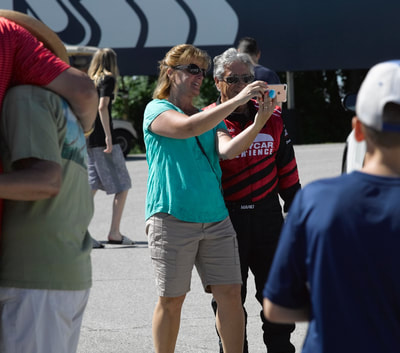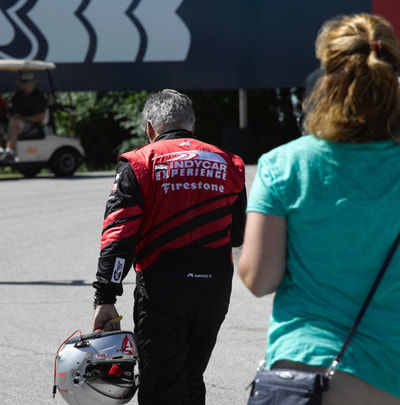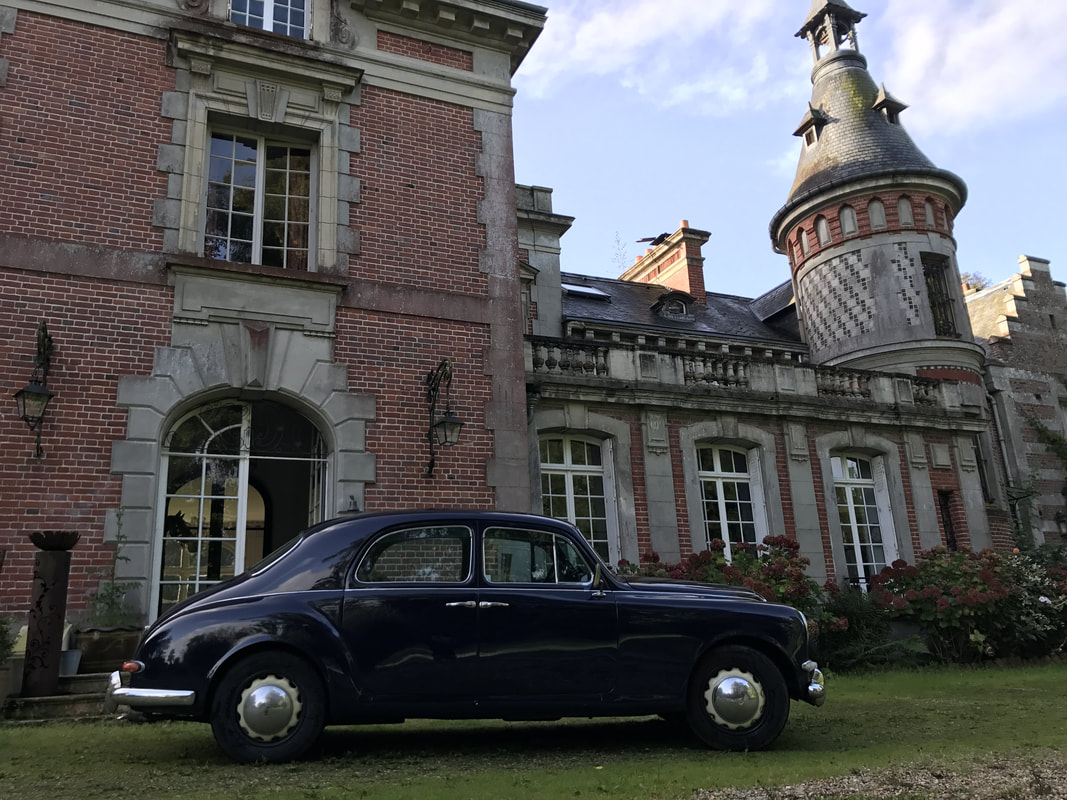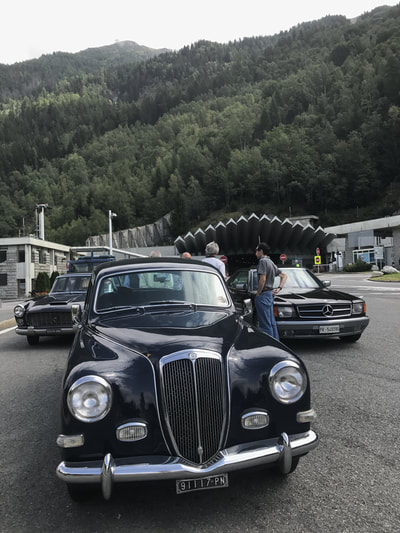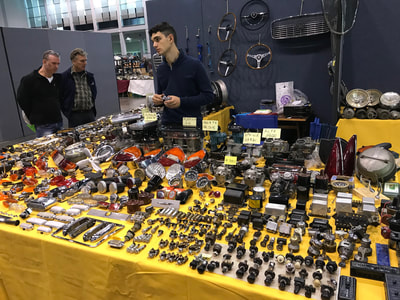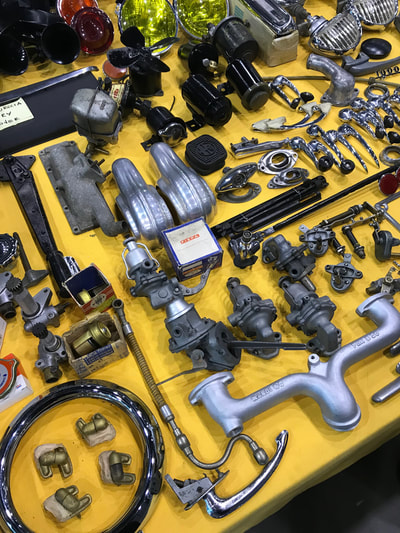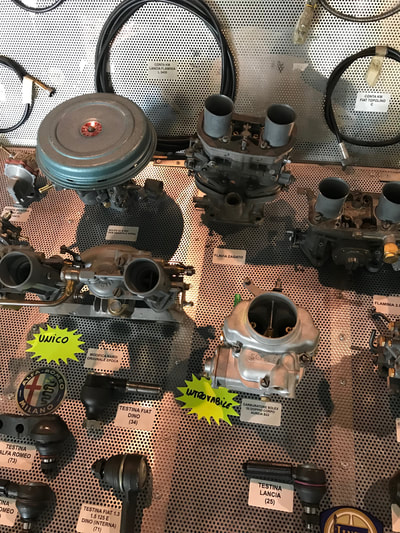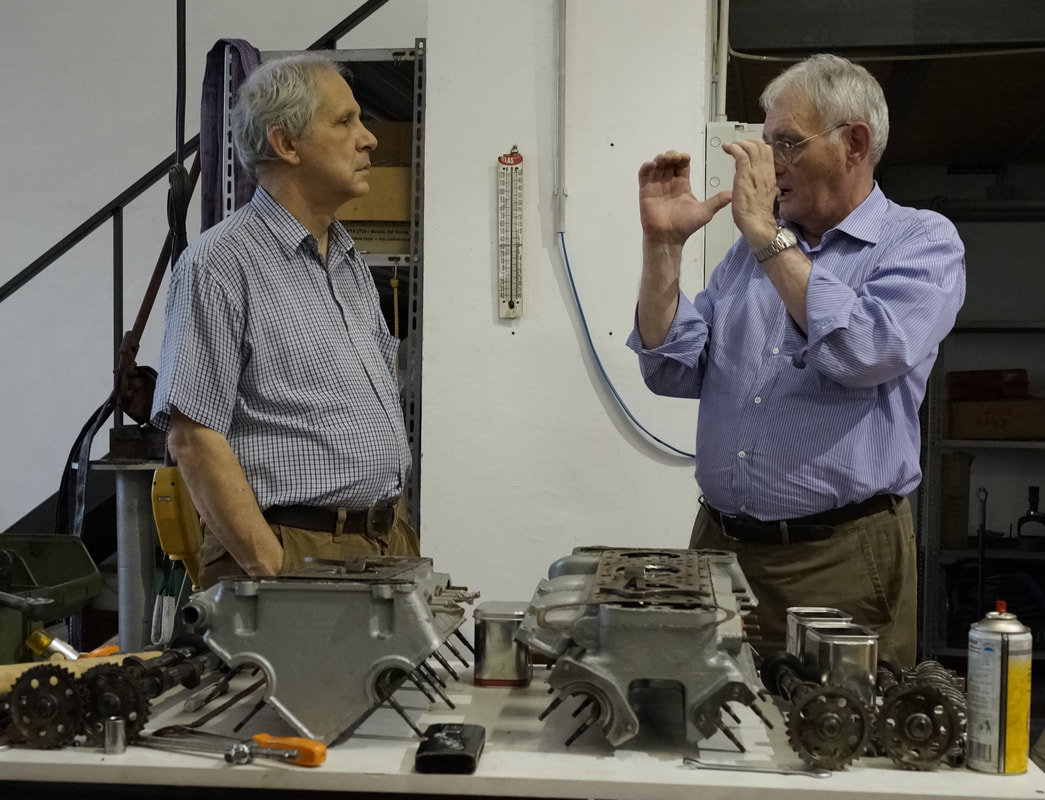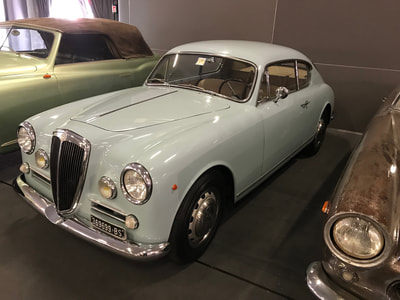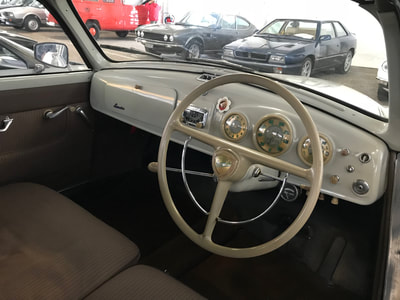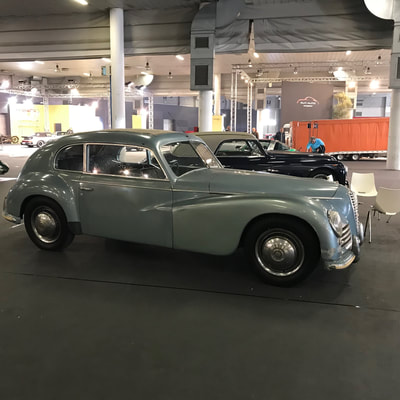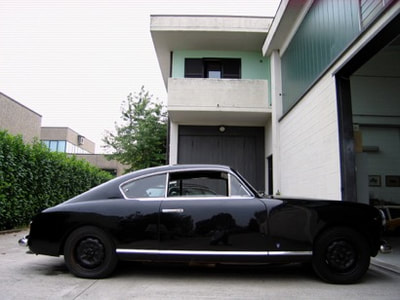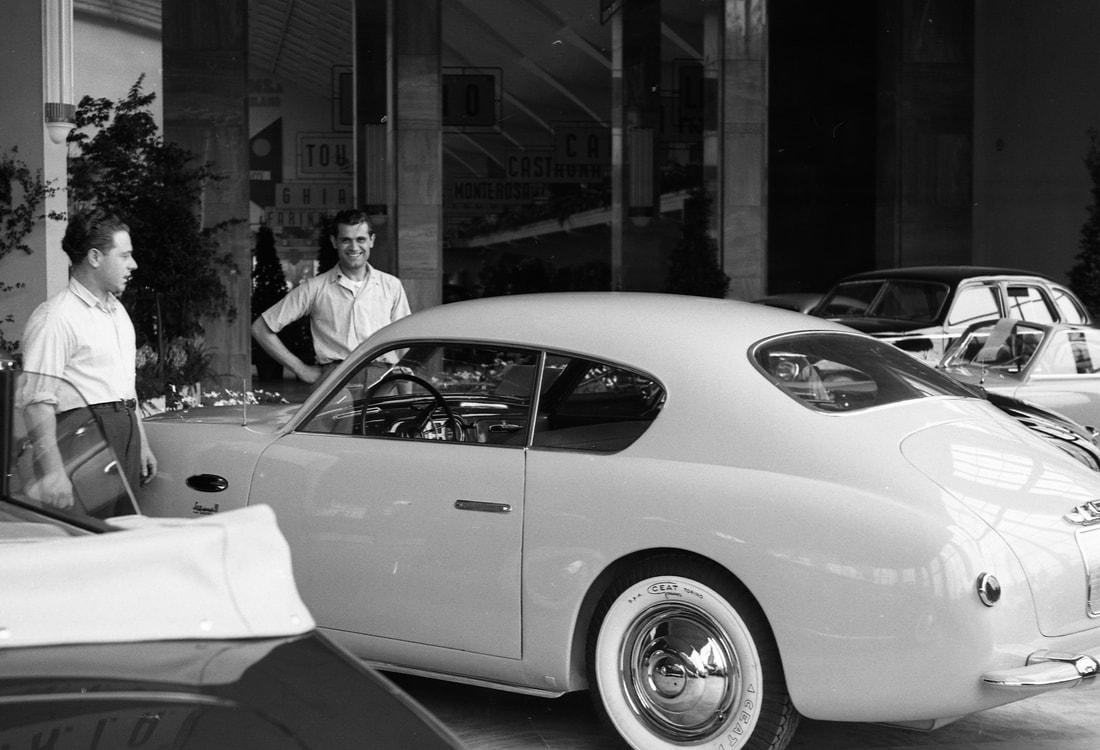|
Took the B20 up to Elkhart Lake for the day last weekend. 350 miles, no problems. Was photographing a nice red car when found next to me an older race car driver - Mario Andretti! Clearly a very nice guy.... Good fun.
0 Comments
On May 19, two fervent Lancistas, Fabrizio Granaroli and Paolo Battistelli, organized a conference on the Lancia V4 in Sangemini, Italy, a small midieval town in the mountains outside Rome. Several people spoke, including Luigi De Virgilio, Gianni Tonti, Fabrizio and myself (via skype). Luigi spoke on some of the more unusual V4 engines designed by his father, Tonti on the racing developments of the Fulvia, Fabrizio on some balancing and engineering issues. I spoke on the history and development of the V4, in particular the design of the heads (intake passages), the blocks and the crankshafts. The conference was well attended, with about 100 people in the audience. Several interesting Lancias were outside (including a Lambda), amid a festival celebration. A video of the talks is at www.SaveLancia.it, or youtu.be/P7z6NlPdhRQ For those seeking a more in-depth understanding of the suspensions, there is now John Cundy's recent writeup on Lancias and handling. It was published in Viva Lancia, the magazine of the EnglishLancia Motor Club (England), and is an articulate explanation of the sliding pillar and IRS in both the Aprilia and Aurelia. It places these developments in historical context, and includes explanations of Olley, a famous supension designer at Rolls Royce and GM, and his understanding of the Lancia design. Also included is information from Rolls Royce's inspection of the Lambda, a little known fact from 1926. Read it here, found at the bottom of the page: Articles
Recently I was able to visit Nigel Trow, a long-time Lancia friend and historian in Wales. He convened a lunch of several friends, whom I call the "West of England/Wales Lancia Brain Trust" including John Cundy, Ron Francis, Paul Mayo, Roland Grazebrook and spouses, among others. Also finally met John Baker, the former owner of an s.2 B20 - we had been in touch many years ago, so it was good to see him in person. It was rare to see everyone together - but having only known these folks for some 10-15 years, my experiences were decidedly junior to the rest of the table. Nigel and Roland have known each other since the mid-1960s, more than 50 years. The amount of Lancia knowledge at the table was daunting, rivaling other Lancia meetings in Italy. The next day, Nigel and I drove up to see Ron Francis, who Nigel has said is "a Welsh farmer who grows Lancias", with parts tucked away here and there; the following day we went to see Roland Grazebrook, to learn about Thetas, massive bronze carburetors, and the intricacies of the early cars. All good fun. New page on color information added under Reference, with paint codes from Max Meyer, Glasurit and Lechler. Not for the faint of heart. Its a confusing subject!
Took the B20 in for a few things. Exhaust gasket had let go, luckily had a spare, easy fix. brake adjustment, seems like it always wants this. A few cables to be tightened.
Most interesting was adjusting the rear shock absorbers. Thanks to William Corke's posting on the LMC site, we were able to find how to adjust the shocks. He showed where the little adjustment tab was on the shocks, under a little cover, and settings varied from fully closed to two turns open. We tried one turn as a middle setting, and it was way too soft, so in the end, we settled for just 1/4 turn open on both sides (one had been fully closed, the other a bit open). The change was lovely - the car is back to its comfortable, but informed, ride and no more jarring over rough bumps. Key to this is also setting the tire pressures. Too often people think firmer is better, and set them at 30psi. The real setting is 25psi, and the sidewalls at this setting provide part of ride comfort. Its important to those of us who live in cities, with our less-than-perfect roads. Set right, the ride is just right. One can always firm things up for the high speed runs on smooth country roads. All good for now! More from Massimo Fila, long-time Aurelia owner who helped with Enzo Russo's “Piloti Biellesi. Giovanni Bracco and Umberto Maglioli”. He writes: "This was a present from Lamberto Grolla to me, with his personal dedication “A Massimo, riesumatore di Aurelia - MM 1951". He was a friend of mine and my family. We all belong to the city of Biella." He also sent this image of Bracco's s.1 B20 1006, getting loaded on an airplane to the Carerra Panamerica. Notice the lowered roof.... Nice! And then Massimo driving his B12 in the 1982 Targa Florio:
There are a few Chicago-area shops that work on Italian cars, but the Lancias tend to go to Autosprint - Gianni D'Avola has "magic fingers", a feel in his hands to solve those thorny Italian car problems. Maybe something to do with growing up in Sicily, but Gianni gets it done.
We were poking around in one of the back rooms one afternoon, and I was impressed by all the special tools. Internet chatter about hub pullers for Lancias (and other cars), never comes up with Gianni and now I know why - he's got a lot of pullers, for the the Lancias/Alfas/Ferraris he works on. And even for the Citroen Traction-Avant. Beppe was a special person. A dignified gentleman, long active in the Registro, he had a deep relation with and love for Aurelias, going back to seeing the Aurelia Corsas at the Mille Miglia in 1952. He said that he had driven more than 1,000,000 kilometers in Aurelias, but its likely the truth was at least double that. He was a good friend, sadly we were separated by distance. We first met in 2000 at the Aurelia rally in the south of France, which he attended in a berlina with his family. A few years later, I visited his mechanic in Como, and Beppe drove up from Milano to join us for an afternoon and discuss camshafts. My son and I had the pleasure of joining him and his lovely wife, Chiara, with Anthony and Lorna Hussey near Siena for a few days; they came to Chicago once on their way back from Alaska. At an Aurelia dinner in Padova in 2015, each of us spoke briefly of our experiences. Beppe stood up, shucked off any time limits, and movingly spoke from the heart, passionately embracing the car in our lives. We were all captivated. Beppe was close to his cars. His s.3 B20 was one of the very few seen with an original Nardi kit, fitted with Solex carbs, perfectly tuned, sweet and tractable. He enjoyed overhauling and tuning Aurelia carburetors. His B20 was fitted with wood knobs, new from Pinin Farina. His B50 cabriolet was an Aurelia without any vibration. Once asked how this was done, he went into detail about how one had to match up the driveshaft parts carefully and do the work oneself. This was from a man familiar with the banking industry, at one time active in Modena supplying interiors for Maserati. And his knowledge was impeccable: who else knew that early B22s had been supplied with B21 engines as the new engines weren’t ready? And could provide the 8 page Lancia advisory issued months later instructing on how update your engine to the new specifications (change the camshaft, change the manifolds, etc.). He and his friend Francesco Gandolfi tended to the Registro for all of us, no easy task in the details. He helped guide the forming of the De Virgilio book, At the Center, advising on how to navigate the complexities of the Italian landscape. He urged the book be in English, recognizing the tradeoffs - that a bilingual edition would have less content, and that it was important to deepen the understanding of the Aurelia for a broader audience. It was a gutsy call from this thoughtful man, one who was comfortable making good and firm decisions. He and his elegant wife, Chiara, represented the depth of character that we so often find around these cars and this marque. He will be sorely missed. We have lost another giant. Our condolences go out to his family. Every once in a while, its time to look at something different. Here is the bottom of an 8C Alfa, taken at Jim Stokes Workshops in England. Lovely.
A post on the LMC website reminded me of a strange day from a few years back. I was driving the B24 (owned at the time) from Chicago to Elkhart Lake, Wisconsin, for a vintage race weekend, a 3 hour drive on main roads,
I was about halfway early one afternoon a few years back, when I noticed the car was running out of gas. Luckily this happened close to a gas station, so I glided in on a "dead stick", without problem. After filling up, it was easy to see that the car now had a flat tire. Everything had to come out of the trunk, to get the spare. So the tire was changed. OK.... things happen. Now, it got even more peculiar - as the car wouldn't start, as the battery (happy up until then) decided to quit. With a push start later, down the road to the autoparts store, which luckily had the right battery in stock. When I went to pull the battery from the car, the heavens opened up and it started to rain heavily. Very heavily. And I had left the battery pulling strap at home. Put the top up, although everything got soaked. Got a strap from the store, pulled the battery, and dripping wet, back on the road to the races, shaking the head in disbelief. What had angered the gods so? Was there more to come? Luckily not. But sometimes, you can be either very lucky or not at all. It was both this time! Massimo Fila in Italy provided the following report of his autumn adventure:
"During the first week end of September, a group of Italian friends, including myself, went to Goodwood to attend the famous Revival. Five beautiful old cars were easily driven from Italy to England on this exciting journey. One of the cars was an Aurelia B12 of Mr and Mrs Bertin from Padova." (ed: Mrs. Bertin took these lovely photos) From time to time, friends send in information on Lancia events that may be of interest to other Lancistas. Two are in hand: First, from Jan Van Hoorick - a show on American cars in Brussels through Jan. 28: www.americandreamcars.be/home-en And from Niels Jonassen - Nordic Lancia Meeting 2018 The 15th Nordic Lancia Meeting will take place from 8th to 10th June 2018 near Vejle on the east coast of the Danish mainland. We have booked the Munkebjerg Hotel situated in a beech forest with fine views of the Vejle Fjord. The hotel is an architectural gem offering very good service and high quality furnishings. It lies at the top of a hill which once a year is used for a historic hill climb. The surrounding countryside is undulating with many quaint, hidden roads and sights. Ideal for Lancia driving. More info below.
Back in the 1950s, several large American corporations brought in Aurelias to study. Ford tested a B24 Spider, and some of their photos of the engine are in the De Virgilio book. It is rumored that GM had a car as well as Alcoa. Steve Katzman uncovered this detailed review of the B10 engine in Michigan Technic, from 1956. The study is about the use of aluminum in the engine, likely from the B10 sedan that was owned by Bill Stebbins for many years. Note the detailed test info on pg. 3, although its curious they used an Ardea engine drawing, and not the Aurelia!
Few things are more interesting than a B24 Spider in service... here it is working as a chase car for the Motogiro d'Italia 1955, sponsored with involvement by Tariff, who might have been flying the airplane. The images are priceless, the film wonderful with riders hopping on and off their 175cc racing bikes, the Lancia-film platform in the background. Someone had a lot of fun with this idea, as can be seen from the snap shots from the video.
A group of B20s taking off at the start of a race Le Mans style - looks like 8 in total. Does anyone know what race this was?
One of the joys of going to Padova is seeing suppliers of parts for our old Lancias. A number of vendors have their wares on display. Davide Rubino has a large number of parts for the Aurelia and other Lancias at: www.rubinoclassiccars.com/ricambi/ricambi-lancia Giolitti from Rome sells a large range of Lancia parts as well, at: www.giolittiricambiautodepoca.com
Guido Rosani recently passed away in Torino during the night of October 14-15. While unexpected, he had been in poor health for some time and died from complications.
Rosani was well known in the Lancia world as a designer and fabricator and was a key fixture in the older Lancia community. Largely known for his work on the D24 and D50 recreations, cars he built over the past decades, he was most recently working on a recreation of a D20, the Lancia sports-racing coupe from the 1950s. He was widely respected for his intimate and accurate knowledge of the Lancia company, and was, in many ways, the last voice of the 1950s company. His father, Nino Rosani, had been the factory architect from the 1940s, and designed the Lancia tower among other buildings. Young Guido had grown up around the factory, and recalled running through the racing department in 1953. Trained as a designer, he was intimately familiar with the company drawings and understood first hand Lancia’s notions of meticulous execution. In the 1970s, he managed motorcycle racing teams and was briefly Ferrari F1 Team manager in 1976. His Lancia recreations were begun in the 1980s first with the Lancia Corsas, lightweight racing cars based on the B20, with Basso in Torino. From there, Rosani went on to build D24 recreations, superbly documented in his book, D24 e Le Lancia Sport, from 1991. His last major effort was the D50 recreation, fabricated in Torino then fettled by Jim Stokes Group in England. Both the D24s and D50s are familiar to automotive fans today, seen at Laguna Seca, Goodwood, and other notable events. An acute historian, Rosani had intimate knowledge of the details of Lancia history. He was a major contributor to Storia della Lancia, the extensive company history published in 1992, and was working on a book on the D50 at the time of his decease. Anthony MacLean, Guido's partner in the D50 project, will endeavor to complete the projects which Guido and he started together. On a more personal note, Guido was especially helpful to my efforts to record 1950s Lancia history. In our many meetings, he shared details of the factory and the family in those years. He and Manfredi Lancia restored the 538 motor, and Guido was intimately familiar with all the nuances of the D series cars. He was a keeper of the spirit of Lancia. For all who appreciate Lancias, especially their racing cars, he will be sorely missed. There were some very nice Aurelias in Padova this year. I hadn't been since 2014, and enjoyed it immensely. Also ran into Wayne Kelham, Chris Gawne, and Ron Francis, for a serious English Lancia Club branch meeting.
Of the interesting Aurelias, there was this lovely model of a berlina, which was luckily avoided as it was not cheap - but it was sold in the first day. Also at the fair were several niceBs0s, an s.1, s.2 and s.6. And the interesting Fiat Balilla Aerodinamico, and a few other cars of interest. What does it mean when Lancia's Aurelia becomes the poster child for the Padova Fiera? Acceptance - the car has arrived.
From Jan Van Hoorick comes photos of this lovely 1950 B50. This Vignale coupe was first registered in September, 1950, as sn. B50-1044, by Bracco, the Lancia racing driver, and is said to have remained in family ownership for many years. Its classic proportions are yet another example of the period's beautiful fastback designs.
Congratulations to Jan, for this wonderful car. Jan has been active in Lancia circles with a love of older Lancias, especially Augustas. Now head of Lancia Club Belgio, he has helped lead a growing group of Augusta owners, centered in Belgium. Niels Jonassen sent the following information about the wooden wheels supplied as factory equipment used on the s.4 to s.6 B20s, and all the B24s:
"These wheels were made by Pagliani e Provenzale from Torino. They usually made golf clubs and billiard cues, and have also been mentioned as producers of 3 wheeled bikes for small children. They existed until a few years ago, but now seem to have disappeared. Without knowing for sure, its possible that P&P also made the wheels for the sports racers as well as the D50. Apart from the centre boss they are very close to the ones on the B20s." There were also wooden wheels supplied by Nardi, but these are generally understood as after-market equipment. Where did the B20's lovely body design come from? Too often we look for the master stroke, the sign of genius, the heroic inspired moment as the way great design comes into the world. But looking at the B20 (and a number of other cars from the same period) stymies this approach: its not just the product of Lancia and Pininfarina, there is even doubt as to who's hand was behind it. There is another way to look at this - not to consider the design as a singular spark of genius, but rather as a product developed in a context, as one among many. The time was full of designers working to figure out the post-war coupe, sharing their ideas among other designers as carrozzeria prepared special project cars for the major automobile shows held each year in Paris, Geneva, and Turin. Their goal was to attract both customers and manufacturers, by continuously pushing design ideas forward. In Italy, special bodies were found on Ferraris, Maseratis, but also they were prepared for Lancias, Fiats and Alfa Romeos. Looking at the work years later, we can see this was a time when designers looked, learned, and shared from each other - as part of a tight community working on the same products but with slightly different answers. In this way antecedents for the B20 are not just in the Cisitalia 202, but also in their Aprilia coupes ( late 1940s to 1950), and in Ghia's Fiat 1400 Supergioiello, possibly by Michelotti. The Fiat 1400 Supergioiello by Ghia: Or the same 1950 Ghia Fiat at the Torino Auto show (thanks to Paolo Giusti). It has very nice lines, similar but exactly not same as the B20....
There is nothing like original, period information. From Auto Italiana, 1954.... These shots are by Corrado Millanta, of the 1954 prototype (note the bumper treatment). This car was at Ospedaletti in December of that year.
A road test of an early 2 liter B20 has been added: B20 road test.
In general, most Aurelia reports are based on later B20s with the de Dion suspension. This report is on an earlier car with IRS. Initially written in 2008 just fresh off the restoration, it has been updated after some 8 years of "fettling". |
CategoriesArchives
July 2023
|
||||||||||||||
